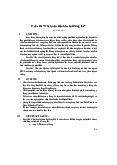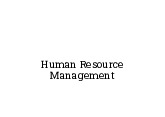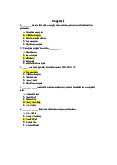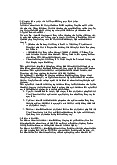



















Preview text:
CHAPTER 5 Training and Development •
Orienting/Onboarding New Employees •
Overview of the Training Process •
Implementing the Training Program •
Implementing Management Development Program • Evaluating the Training Effort
Orienting/ Onboarding New Employees •
Employee Orientation (or Onboarding) provides
new employees with the basic background information
they need to do their jobs (such as computer
passwords, company rules, staff benefits, HR policies,
company operations, safety regulations…). •
HR specialist usual y handles the first part of the orientation. •
New staff then meet supervisors. Training
: The process of teaching new or current employees the
basic skills they need to perform their jobs.. •
Training is used to focus mostly on technical skills. • In addition, employees need skil s in team building, decision-making, and communication… Tetra Pak Packaging Material Five -step training process (ADDIE) Training Needs Analysis Instructional Design (TNA)
• Compile and produce the training
• Identify the specific job skills
program content, including
• Analyze the needs of trainees
workbooks, exercises, and activities
• Develop specific, measurable
• Use techniques such as on-the-job knowledge and performance training and computer-assisted objectives Validation Implementation Evaluation and Follow- (Developing the course) up
• Train the targeted employee
• Validate the training program by group
• Assess the program’s success presenting it to a small or failure representative audience Training Need Analysis •
Strategic Training Needs Analysis: identifies the behaviors, skills, and training that
employees will need to fill these new future jobs. •
Current Training Needs Analysis: two main ways to identify training needs:
1. Task analysis: assessing new employees’ training needs.
2. Performance analysis: assessing current employees’ training needs. Designing the Training Program •
Setting Learning Objectives: address the performance deficiencies that you
identified via the needs analysis, training budget for the program. •
Creating a Motivational Learning Environment:
- Learning requires both ability and motivation.
- The learner must also be motivated.
Training will be more effective if trainers understand how people learn. • Some suggestions:
- Make the learning meaningful: learners are more motivated to learn
something that has meaning for them.
- Reinforce the learning: provide plenty of feedback.
- Make skills transfer obvious and easy: transfer new skills and
behaviors from the training site to the job site Developing the Program •
Choosing and assembling the actual content the program will present. •
Choosing (or creating) the specific instructional methods (lectures, cases, Web-based, etc.) you will use.




